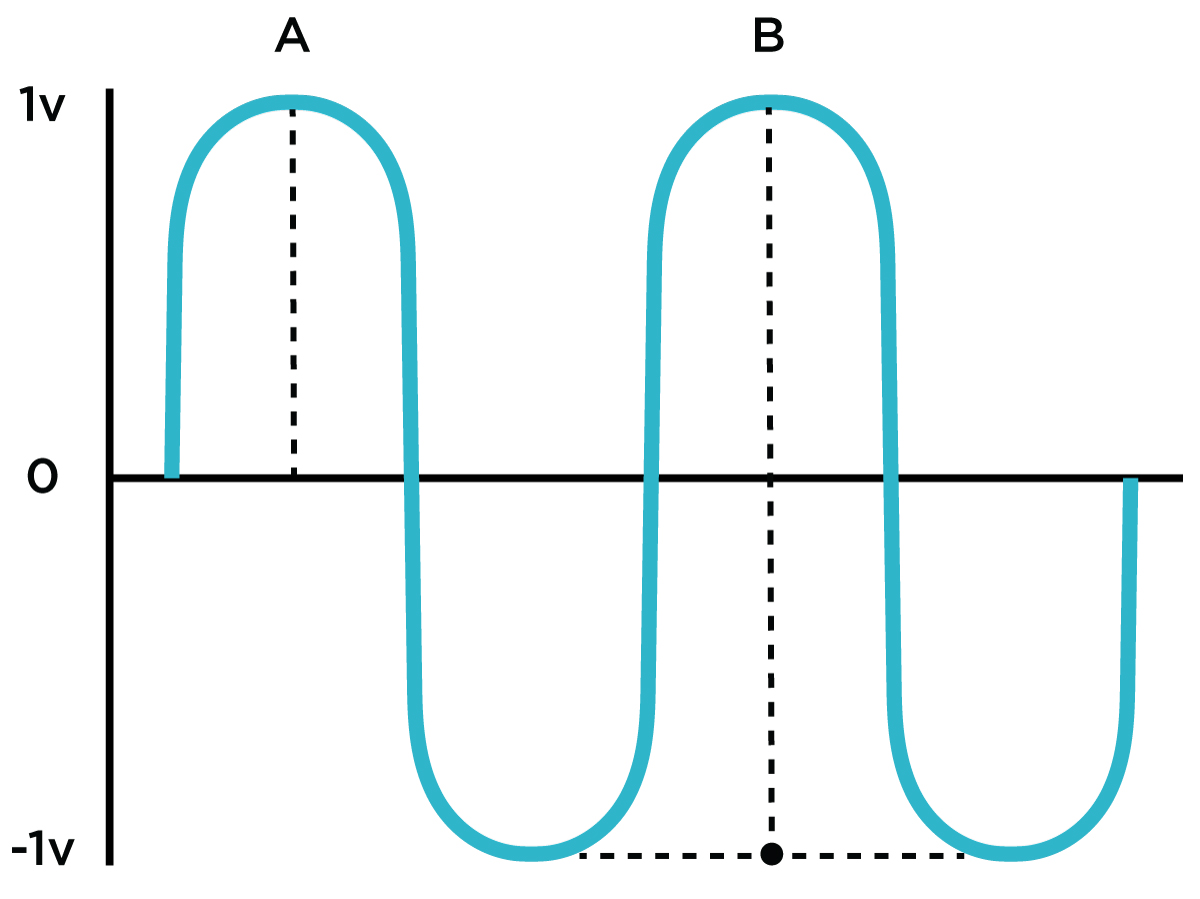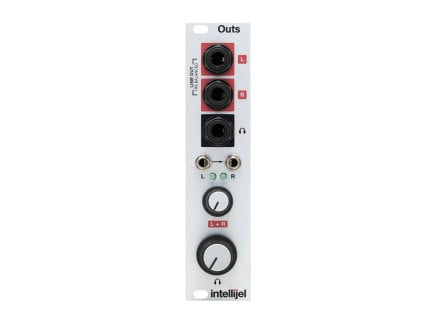A fascination with Eurorack modular synthesizers is, in many cases, intertwined the allure of infinite flexibility. The freedom to send any signal anywhere for any reason means that it is easy to create a unique and personal workflow—in fact, as we know, two systems of exactly the same modules in different hands can produce vastly different results. So understanding how you personally prefer to route signals is an enormous part of the task of developing a personal voice on your instrument. In many ways, your patching style is a huge part of the music you create with a modular synthesizer.
Learning your patching style within the modular is often as simple as experimentation—however, when you're getting started, understanding how to bring external gear into your Eurorack-centric setup can be a bit confusing. Suddenly you're starting to think about extramusical concepts like headroom, signal to noise ratio, shifting between various signal levels, and several other ideas that take patching out of the realm of pure music-making and into the realm of utility. That said, knowing how to interface your system with external gear can be a gateway to completely new creative opportunities...so understanding how best to get all of your gear talking can be a huge advantage to the creative musician.
In the above video, our hosts Trovarsi and Trevor talk through a handful of scenarios for connecting your Eurorack system together with external gear, from concepts in effect routing to the technical details about connecting external mixers, interfaces, effect pedals, and more. Check out the video above, and read below for some condensed thoughts on getting everything connected.
Understanding Signal Levels
Before getting into routing techniques, it's important to first understand the concept of signal level, and how it differs between different types of gear. In the broadest sense, signal level can be measured in terms of voltage swing—that is, the distance between the highest and lowest voltages an electronic sound source can produce. Folks in the modular synth world are likely accustomed to thinking about signal level in terms of voltage: after all, since Control Voltage (CV) is so tied into the way we work, it makes sense that we'd think about this concept often.
 In this example, the amplitude of range A is 1V; the amplitude of range B is a total of 2Vpp. Eurorack audio levels are usually 5Vpp!
In this example, the amplitude of range A is 1V; the amplitude of range B is a total of 2Vpp. Eurorack audio levels are usually 5Vpp!
Eurorack signal levels, though, are typically much higher than the types of signals used by other gear. Eurorack signals (from an oscillator, for instance) often swing between -5V and 5V (10V peak to peak, or 10Vpp). This is the signal level (give or take a volt or two!) that most audio-related Eurorack modules produce and expect, and this rough standard is part of what keeps Eurorack functional as a unified format. External audio gear typically uses different signal levels, though. And beyond that, other types of gear use still different signal levels—so knowing what you're dealing with is a huge help in getting things connected. The other types of signal levels you're likely run into are line, instrument, and mic.
Line level comes in two flavors: professional and consumer. Professional line level (sometimes called +4dBu) is around 3.5V peak to peak—this is the signal level used by most outboard mixers, and the level produced by many synthesizers, drum machines, and other electronic musical instruments. Consumer line level (sometimes called -10dBV) can vary, often between 0.5V and 1V peak to peak—this is commonly used in home stereo systems, or other gear meant for home entertainment, and in some musical instruments.
Electric instruments with passive pickups produce even lower-level signals in the range of millivolts. This includes electric guitars and basses, as well as any "electric" instrument with passive amplification. These signal levels are super low compared to Eurorack or line level signals, and can require quite a bit of adjustment when connecting to your Euro gear. Mic levels are in a similar range, but even lower—requiring quite a lot of gain before they can be used with other gear (hence the importance of preamps in studios and mixers).
With this quick and rough rundown of the different typical signal levels, we can start to think about how all these different worlds can play together.
Scenario 1: Connecting your Modular to an External Mixer / Interface
Oftentimes, it's necessary to connect your system to an external mixer or audio interface for performance or recording. Many mixers and interfaces allow for line level, mic level, and instrument level sources. So in most situations, you'll need to adjust the output levels of your system to be lower in order to better match the gear you're plugging into. Of course, there are lots of dedicated "output" modules out there to assist in this level conversion, often combined with other niceties (signal balancing, headphone outputs, cue outputs, etc)., but in a pinch, even a simple attenuator or VCA can do the trick in lowering your output signal levels.
Do you have to do this? No—in reality, most mixers and interfaces will work fine with Eurorack level inputs, but they will be quite loud relative to other sound sources, making them difficult to balance relative to other sources, and leaving very little remaining headroom on the gear you're plugged into. So while it won't hurt anything to plug Euro signals straight into your mixer or interface, it's also difficult to get things to sound as good as they possibly can this way—so using a dedicated output interface can be super helpful in getting things running optimally.
Some good output interfaces include Make Noise's XOH, Intellijel's Outs, Noise Engineering's Sono Abitus, Joranalogue's Transmit 2, and others. There's no shortage of options; it's just a matter of looking closely and seeing which option most closely suits your particular application.
Scenario 2: Connecting External Instruments to your Euro Gear
Of course, with all the signal processing options presented by Eurorack, it can be very interesting to bring external signals into your system—possibly for filtering, granular processing, resynthesizing, and practically anything else you could dream up. However, as with running audio the other direction, carefully considering your signal levels is an important step in getting things working optimally.
Since external synths, drum machines, mics, guitar, and other devices have relatively low output levels compared to Eurorack's optimal signal levels, you'll need some kind of preamplifier (preamp) to boost your signal to a suitable range for Eurorack processing—this way you can keep clean, orderly gain staging and more easily keep signals balanced with one another. There are tons of ways to do this amplification—again, using a dedicated preamp/external input module is a common go-to approach. Such modules include Doepfer's A-119, Xaoc Devices's Sewastopol, Expert Sleepers's Little Mikey, and more.
Many of this class of module will also include extra tools, such as envelope followers and onset detectors which detect the loudness of the incoming signal and produce CV and gate signals for use as modulation signals in your synth. This can be a great way of using external instruments to control your synth, or to link the behavior of multiple modules to an underlying core track. Some mixer modules also have enough gain on their inputs to support the connection of external instruments directly—WMD's Performance Mixer is great in this regard, and can really act as the center of a Eurorack-centric studio setup, even one that includes external instruments and interfaces.
Scenario 3: Using Pedals with Your Modular Synth
Effects pedals can be a great way to quickly expand your palette—instantly adding extra dimensions to your ability to process or generate sound. Especially with so many adventurous pedal manufacturers out there (shout out to Chase Bliss, Hologram, Red Panda, Fairfield, and all you weirdos out there), adding some external effects to your Eurorack system is a more interesting prospect now than ever before. However, depending on how you want to integrate things, you might need to take a couple of steps to keep things running optimally.
Pedals are, for the most part, designed to accept instrument-level signals...but many now are also designed to accept levels from keyboards and other line-level gear as well. So getting signal into a pedal isn't so different from getting it into a mixer or interface—you just need to attenuate the output level to be suitable for the pedal. And getting signal back out of the pedal and into you system isn't so complex, either—you can use the same sort of preamps you'd use to boost the level from an external instrument, as discussed before.
Some modules are designed to handle both ends of this process, and they often include some other niceties for blending between wet and dry signal. Two such modules are ALM's SBG and Doepfer's A-138d Crossfader/FX Insert. Both of these allow for output scaling, input scaling, and continuous crossfading between the dry and wet signals, making them an excellent way to integrate external effects into your setup. Other modules like the aforementioned Xaoc Sewastopol can handle both ends of the signal translation process as well.
Of course, how you handle effect routing is a hugely personal process, and might vary from situation to situation. Sometimes you may want to simply connect an effect to one device; sometimes you might want to connect an external effect on the aux send of a mixer in order to apply it to multiple sound sources all at once. Having a handle on basic mixing principles and the minutia about how to adjust your signal levels can be a tremendously empowering thing, opening up your setup and inviting in countless new possibilities.
Check out the video above for a walkthrough on a few potential signal routing options, and always keep your mind open as to how you could integrate different types of gear together. Add a Eurorack processor to your drum machine, use pedals with your Euro system, or integrate a laptop as an audio processor—it's all possible, and once you know how to get it all connected, the world is your oyster.
















